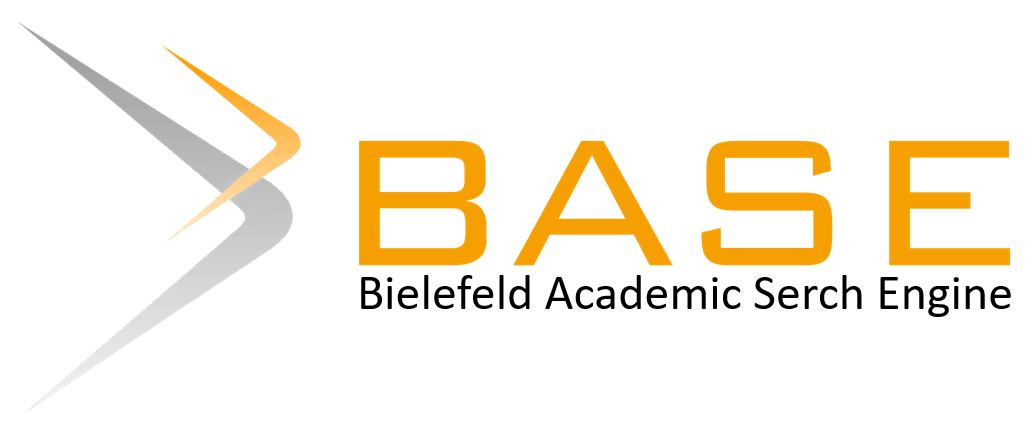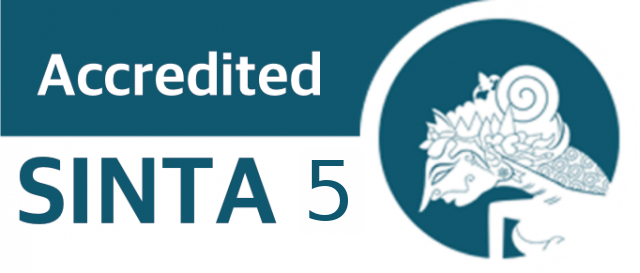Penapisan Fitokimia, Kadar Kurkuminoid dan Aktivitas Antibakteri Temu Hitam (Curcuma aeruginosa (Christm) Roscoe.), Temu Putih (Curcuma zedoaria Roxb.) dan Temulawak (Curcuma xanthorrhiza Roxb.)
DOI:
https://doi.org/10.30595/hmj.v4i1.9092Keywords:
Curcuma, Zingiberaceae, Curcuminoid, AntibacterialAbstract
The content of secondary metabolites in the rhizome of the Curcuma genus such as Black turmeric (Curcuma aeruginosa Roxb.), White turmeric (Curcuma zedoaria (Christm.) Roscoe) and Java turmeric (Curcuma xanthorrhiza Roxb.) play a role in various pharmacological activities. One of them is the content of the curcuminoid compounds which have been proved to have antibacterial activity. This study aims to screen the content of secondary metabolite compounds, determine curcuminoid content and verify the antibacterial activity of the extracts of Black turmeric (Curcuma aeruginosa Roxb.), White turmeric (Curcuma zedoaria (Christm.) Roscoe) and Java turmeric (Curcuma xanthorrhiza Roxb.). Extraction was carried out by the maceration method using 95% ethanol as solvent. Phytochemical screening was tested for the content of alkaloid, polyphenols, flavonoids, quinones, tannins, saponins, and steroids/ triterpenoids compounds. Determination of curcuminoid content by UV-Vis Spectrophotometry method. The antibacterial activity test was carried out by the microdilution method against Staphylococcus aureus, Staphylococcus epidermidis, and Propionibacterium acne bacteria. The results of phytochemical screening showed that the three extracts contained polyphenols and flavonoids. Quinone compounds are only contained in the extract of Black turmeric and Java turmeric. Saponin compounds were only detected in Black turmeric and White turmeric  extracts. Meanwhile, steroid/ triterpenoid compounds were detected in the extract of White turmeric and Java turmeric. The results of curcuminoid content determination on the three extracts showed that the Java turmeric extract had the highest content of curcuminoids (16.07 ± 0.023 mg CE/g extract). The results of the antibacterial test showed the strongest activity of the three test samples shown by Java turmeric extract with a minimum inhibitory concentration (MIC) value of 64 mg/mL against Staphylococcus aureus bacteria; 256 mg/mL against Staphylococcus epidermidis bacteria; and 32 mg/mL against the Propionibacterium acne bacteria. These results indicate that Java turmeric extract is more active against Propionibacterium acne bacteria.
References
1. Subositi D, Wahyono S. Study of the genus curcuma in Indonesia used as traditional herbal medicines. Biodiversitas. 2019;20(5):1356–61.
2. Dalimarta S. Atlas Tumbuhan Obat Indonesia Jilid 3. Jakarta: Trubus Agriwidya; 2003. 164–169 p.
3. Evizal R. Tanaman Rempah dan Fitofarmaka. Vol. 7. Lampung: Lembaga Penelitian Universitas Lampung; 2013. 41–47 p.
4. Dosoky NS, Setzer WN. Chemical composition and biological activities of essential oils of curcuma species. Nutrients. 2018;10(9):10–7.
5. Suphrom N, Pumthong G, Khorana N, Waranuch N, Limpeanchob N, Ingkaninan K. Anti-androgenic effect of sesquiterpenes isolated from the rhizomes of Curcuma aeruginosa Roxb. Fitoterapia. 2012;83(5):864–71.
6. Choudhury D, Ghosal M, Das AP, Mandal P. Development of single node cutting propagation techniques and evaluation of antioxidant activity of Curcuma aeruginosa Roxburgh rhizome. Int J Pharm Pharm Sci. 2013;5(2):227–34.
7. Nugrahaningtyas KDWI, Matsjeh S, Wahyuni TDWI. Isolasi dan Identifikasi Senyawa Flavonoid dalam Rimpang Temu Ireng (Curcuma aeruginosa Roxb.). Biofarmasi. 2005;3(1):32–8.
8. Marliani L, Budiana W, Anandari Y. The Effect of Extraction Condition on The Polyphenol Content and Antioxidant Activity of Curcuma zedoaria (Christm.) Roscoe Rhizome. Indones J Pharm Sci Technol. 2017;4(2):57.
9. Nuryanti S. Aktivitas Antifungi Temu Putih (Curcuma zedoaria) terhadap Trichophyton mentagrophytes. As-syifaa. 2016;08(02):50–7.
10. Sarjono P. Aktivitas Antibakteri Rimpang Temu Putih (Curcuma Mangga Vall). J Sains Dan Mat. 2007;15(2):89–93.
11. Das K, Rahman MA. Analgesic and antimicrobial activities of Curcuma zedoaria. Int J Pharm Pharm Sci. 2012;4(SUPPL. 5):322–8.
12. Dalimarta S. Atlas Tumbuhan Obat Indonesia Jilid 2. Jakarta: Trubus Agriwidya; 2000. 182 p.
13. Hwang JK, Shim JS, Pyun YR. Antibacterial activity of xanthorrhizol from Curcuma xanthorrhiza against oral pathogens. Fitoterapia. 2000;71(3):321–3.
14. Purnamaningsih N, Kalor H, Atun S. Uji Aktivitas Antibakteri Ekstrak Temulawak (Curcuma Xanthorrhiza) Terhadap Bakteri Escherichia coli ATCC 11229 dan Staphylococcus aureus ATCC 25923. J Penelit Saintek. 2017;22(2):140–7.
15. Dewi Novianti. Kemampuan Antifungi Ekstrak Rimpang Temulawak (Curcuma xanthorrhiza) Terhadap Candida albicans. J Ilm Mat dan Ilmu Pengetah Alam. 2016;13(2):69–79.
16. Sidik, Mulyono MW. MA. Temulawak (Curcuma xanthorriza Roxb.). Jakarta: Yayasan Pengembangan Obat Bahan Alam Phytomedica.; 1992.
17. Vollono L, Falconi M, Gaziano R, Lacovelli F, Dika E, Terracciano C, et al. Potential of Curcumin in Skin Disorders. Nutrients. 2019;11(9).
18. Kemenkes RI DK dan A. Farmakope Herbal Indonesia. 2nd ed. Jakarta: Kementrian Kesehatan RI; 2017.
19. Depkes RI. Farmakope Indonesia. IV. Jakarta: Departemen Kesehatan Republik Indonesia; 1995.
20. Farnsworth N. Biological and phytochemical screening of plants. J Pharm Sci. 1966;151(3712):874–5.
21. Marliani L, Anandari Y, Budiana W. Pengaruh Pelarut, Waktu Dan Suhu Ekstraksi Terhadap Kandungan Senyawa Flavonoid Dan Kurkuminoid Ekstrak Rimpang Temu Putih (Curcuma zedoaria (Christm.)Roscoe). J Farm Galen. 2017;4(Edisi Khusus SemNas TOI4):35–9.
22. CLSI. Methods for Dilution Antimicrobial Susceptibility Tests for Bacteria That Grow Aerobically ; Approved Standard — Ninth Edition. Vol. 32. Clinical and Laboratory Standards Institute; 2012.
23. Heinrich M. Farmakognosi dan Fitoterapi. Jakarta: EGC; 2009.
24. Cowan MM. Plant Products as Antimicrobial Agents. Clin Microbiol Rev. 1999;12:564–82.
25. Teow SY, Liew K, Ali SA, Khoo ASB, Peh SC. Antibacterial Action of Curcumin against Staphylococcus aureus: A Brief Review. J Trop Med. 2016;2016.
26. Zorofchian Moghadamtousi S, Abdul Kadir H, Hassandarvish P, Tajik H, Abubakar S, Zandi K. A review on antibacterial, antiviral, and antifungal activity of curcumin. Biomed Res Int. 2014;2014.
27. Gunes H, Gulen D, Mutlu R, Gumus A, Tas T, Topkaya AE. Antibacterial effects of curcumin: An in vitro minimum inhibitory concentration study. Toxicol Ind Health. 2016;32(2):246–50.
28. Holetz FB, Pessini GL, Sanches NR, Cortez AG, Nakamura CV, Prado B, et al. Screening of Some Plants Used in the Brazilian Folk Medicine for the Treatment of Infectious Diseases. Mem Inst Oswaldo Cruz. 2002;97(7):1027–31.
29. Pratiwi, Sylvia T. Mikrobiologi Farmasi. Jakarta: Penerbit Erlangga; 2008. 188–192 p.Downloads
Published
Issue
Section
License
For submission of manuscripts to the Herb-Medicine Journal, the authors must certify that:
I have been authorized by my co-author to submit the manuscript to the Herb-Medicine Journal
I hereby declare, on behalf of myself and my co-authors, that:
The submitted manuscript is original work and has not been published in another peer-reviewed journal or is being considered for publication by another journal. Also, the manuscript does not infringe any existing copyright or other third party rights.
The manuscript does not contain material that may violate the law, slander, or SARA, in any way, violates the terms and conditions contained in the agreement
I/we have taken care that the scientific knowledge and all other statements contained in the manuscript are in accordance with authentic facts and formulas and will not, if followed appropriately, harm the user
No liability shall be assumed by Herb-Medicine Journal, its staff or members of the editorial board for any injury and/or damage to persons or property as a matter of product liability, negligence or otherwise, or from the use or operation of any method, product instructions, advertising , or ideas contained in publications by the Herb-Medicine Journal
Authors who publish in the Herb-Medicine Journal certify that all authors have read and agree to the contents of the Cover Letter or the Terms and Conditions. Plagiarism is strictly prohibited, and by submitting a manuscript for publication, the author agrees that the publisher has the legal right to take appropriate action against the author, if plagiarism or false information is found. Once submitted to the Herb-Medicine Journal, authors will not withdraw their manuscript at any stage prior to publication.
The author owns the copyright and grants the journal rights for first publication with the work simultaneously licensed under a Creative Commons Attribution License which allows others to share the work with acknowledgment of the work's authorship and initial publication in this journal.
Authors may enter into separate additional contractual agreements for the non-exclusive distribution of the published journal version of the work (for example, posting it to an institutional repository or publishing it in a book), with acknowledgment of its initial publication in this journal.
Authors are permitted and encouraged to post their work online (for example, in institutional repositories or on their websites) prior to and during the submission process, as this can lead to productive exchanges, as well as earlier and larger citation of published work (See The Effects of Open Access).
Untuk pengiriman naskah ke Herb-Medicine Journal, penulis harus menyatakan bahwa:
- Saya telah diberikan otorisasi oleh rekan penulis saya untuk memasukkan naskah ke Herb-Medicine Journal
- Saya dengan ini menyatakan, atas nama saya dan rekan penulis saya, bahwa:
- Naskah yang dikirimkan adalah karya asli dan belum pernah diterbitkan dalam jurnal peer-review lain atau sedang dipertimbangkan untuk diterbitkan oleh jurnal lain. Serta, naskah tidak melanggar hak cipta yang ada atau hak pihak ketiga lainnya.
- Naskah tidak mengandung materi yang mungkin melanggar hukum, memfitnah, atau SARA, dengan cara apa pun, melanggar syarat dan ketentuan yang tercantum dalam perjanjian
- Saya / kami telah berhati-hati bahwa pengetahuan ilmiah dan semua pernyataan lain yang terkandung dalam naskah sesuai dengan fakta dan formula otentik dan tidak akan, jika diikuti dengan tepat, merugikan pengguna
- Tidak ada tanggung jawab yang ditanggung oleh Herb-Medicine Journal, stafnya atau anggota dewan editorial untuk setiap cedera dan/atau kerusakan pada orang atau properti sebagai masalah pertanggungjawaban produk, kelalaian atau sebaliknya, atau dari penggunaan atau pengoperasian metode, produk apa pun instruksi, iklan, atau ide yang terkandung dalam publikasi oleh Herb-Medicine Journal
Penulis yang menerbitkan dalam Herb-Medicine Journal menyatakan bahwa semua penulis telah membaca dan menyetujui isi Surat Pengantar atau Syarat dan Ketentuan. Plagiarisme dilarang keras, dan dengan menyerahkan naskah untuk publikasi, penulis setuju bahwa penerbit memiliki hak hukum untuk mengambil tindakan yang pantas terhadap penulis, jika ditemukan plagiarisme atau informasi palsu. Setelah diserahkan ke Herb-Medicine Journal, penulis tidak akan menarik naskah mereka pada tahap apa pun sebelum dipublikasikan.
Penulis memiliki hak cipta dan memberikan hak jurnal untuk publikasi pertama dengan karya yang secara simultan dilisensikan di bawah Lisensi Creative Commons Attribution yang memungkinkan orang lain untuk berbagi karya dengan pengakuan kepengarangan karya dan publikasi awal dalam jurnal ini.
Penulis dapat membuat perjanjian kontrak tambahan yang terpisah untuk distribusi non-eksklusif versi jurnal yang diterbitkan dari karya tersebut (misalnya, mempostingnya ke repositori institusional atau menerbitkannya dalam sebuah buku), dengan pengakuan atas publikasi awalnya di jurnal ini.
Penulis diizinkan dan didorong untuk memposting pekerjaan mereka secara online (misalnya, dalam repositori institusional atau di situs web mereka) sebelum dan selama proses pengajuan, karena dapat menyebabkan pertukaran yang produktif, serta kutipan yang lebih awal dan lebih besar dari karya yang diterbitkan (Lihat The Effect of Open Access).













